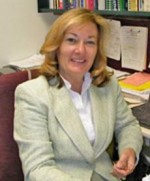University study seeks transfer student success

When senior psychology major Janice Gifford transferred to USF, she was surprised that the classes she took at a community college “didn’t equate to the same number in terms of credit hours.”
“Some of my classes didn’t transfer over equally, so I ended up being shorted credits and it made my G.P.A go down,” she said.
Jamie Basford, a senior majoring in psychology, had similar difficulties when she transferred to USF from HCC.
“I transferred from Hillsborough Community College and they made me take a lot of classes I didn’t necessarily need for my major,” she said. “I’m graduating this spring with a lot of extra credits that I wasted my money on,” she said.
A USF professor is now conducting research to figure out how transfer students can avoid advising problems like those experienced by Gifford and Basford. The study also pertains to USF, considering the University takes in a lot of transfer students. This fall, USF’s biggest group of incoming students was transfer students, numbering 5,026, according to a University press release.
In a four-year partnership with Portland State and Arizona State Universities, Jan Ignash, an associate professor of higher education, is looking at increasing community college transfers to USF and the success of these students in pursuing their bachelor’s degree.
The project, started in 2005 and funded by the Lumina Foundation for Education, is broken up into three segments: an e-journal study, a survey of administrators from USF and local community colleges and a quantitative study of student transfer patterns since 1995.
In 2006, Ignash and her team conducted a pilot e-journal study with 57 students charting their feelings and thoughts during the transfer process. Throughout the transition, many expressed concerns about becoming acclimated to their new environment and the need for guidance. Many transfer students felt as though it was the University’s job to provide help with learning to navigate the ‘University system.’
Although Ignash said the pilot journal was effective, she wanted to change some variables before the study was repeated between 2007 and 2008 with 90 to 100 students.
“In the pilot study we tracked the students’ transition and recorded their perceptions and experiences,” she said. “Now that we are repeating the process, we not only want to know what they are thinking, but also how they are dealing with problems and issues and what they plan on doing about them.”
The second phase of the study, recently completed by graduate research assistant Ruth Slotnick, calls for 27 one-on-one interviews with administrators from HCC, SPC and USF addressing transfer student issues.
Ignash wanted Slotnick to head the administrator survey portion not only to provide valuable experience, but also to get a unique perspective during the interviews.
“Ruth handles most of the day-to-day budget management regarding the grant, giving her great experience for her resume,” she said. “I also thought that it would be better for a student to conduct the interviews with administrators because they are better able to understand the transfer students’ perspectives.”
By the end of 2008, Ignash hopes to complete the third phase of the project, a quantitative study to compare student transfer success rates among races, genders and majors dating back at least a decade.
The study is unique in that the majority of the research comes from the student perspective and it comes from three different states throughout the country.
“A lot of research has been done in the past from the administrative and state level, but not necessarily from the student level,” she said. “This study is also different because the data collected is from three different geographical locations, which hasn’t really ever been done. Afterwards, we plan on comparing which policies were most helpful to transfer students, and asking ourselves if they can be expanded to other states.”






